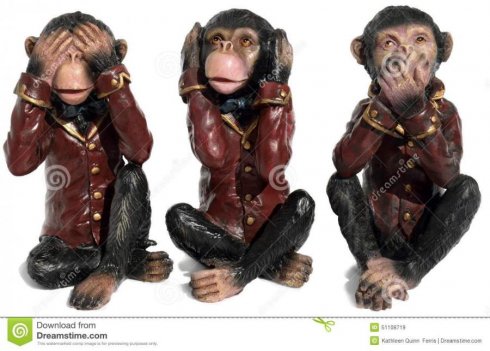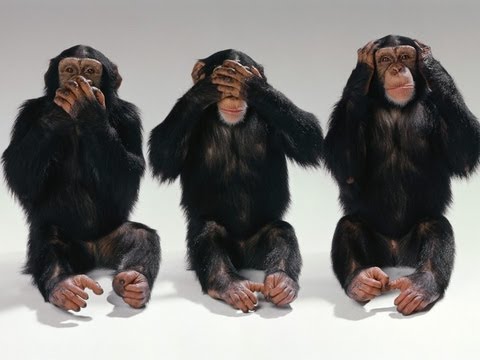The Three Wise Monkeys Statue (Aspen Mountain)
This statue is on Aspen Mountain. Thanks to Mike Britt for contributing the photo of it below (click it to enlarge). See more information below the photo.
The three wise monkeys are a pictorial maxim, embodying the proverbial principle "see no evil, hear no evil, speak no evil". The three monkeys are Mizaru, covering his eyes, who sees no evil; Kikazaru, covering his ears, who hears no evil; and Iwazaru, covering his mouth, who speaks no evil. There are various meanings ascribed to the monkeys and the proverb including associations with being of good mind, speech and action. In the Western world the phrase is often used to refer to those who deal with impropriety by turning a blind eye. Outside Japan the monkeys' names are sometimes given as Mizaru, Mikazaru, and Mazaru, as the last two names were corrupted from the Japanese originals. The monkeys are Japanese macaques, a common species in Japan. The source that popularized this pictorial maxim is a 17th-century carving over a door of the famous Tōshō-gū shrine in Nikkō, Japan. The carvings at Tōshō-gū Shrine were carved by Hidari Jingoro, and believed to have incorporated Confucius’s Code of Conduct, using the monkey as a way to depict man’s life cycle. There are a total of eight panels, and the iconic three wise monkeys picture comes from panel 2. The philosophy, however, probably originally came to Japan with a Tendai-Buddhist legend, from China in the 8th century (Nara Period). It has been suggested that the figures represent the three dogmas of the so-called middle school of the sect. The shrine at Nikko is a Shinto shrine, and the monkey is an extremely important being in the Shinto religion. The monkey is believed to be the messenger of the Hie Shinto shrines, which also have connections with Tendai Buddhism. There are even important festivals that are celebrated during the year of the Monkey (occurring every twelve years) and a special festival is celebrated every sixteenth year of the Kōshin. (This is from the Wikipedia page for the Three Wise Monkeys; see that page for more information.)
Note, the order in the written material above is see no evil, hear no evil, speak no evil. However, they are in a different order in this statue: hear no evil, speak no evil, see no evil. Also, see the images below for other orders. (Click on images to enlarge.)






